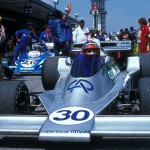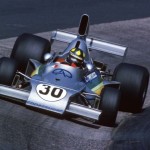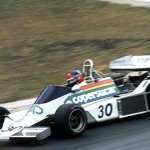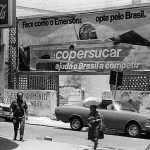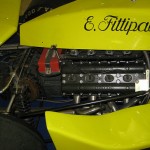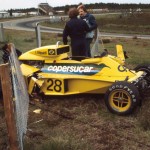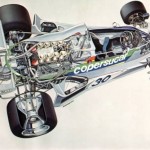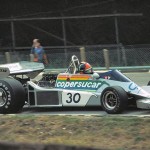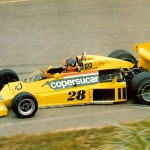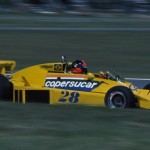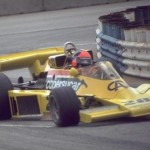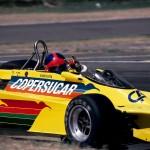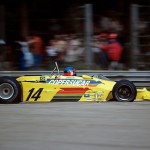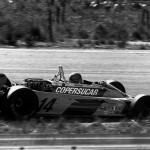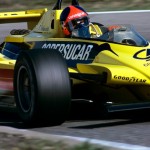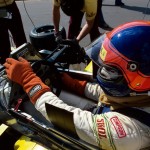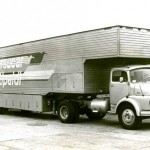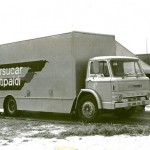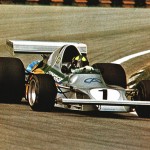Emerson Fittipaldi on Copersucar years: “I was taking a risk, it’s true”
“Fittipaldi”. It’s one of those names that doesn’t need a second name. Like “Pele”, or “Maradona”, “Elvis” or “Madonna”
At the mention of the name all of us instinctively think of Emerson (don’t we?), but motorsport has been invaded by Fittipaldis over the years. Straight up I will admit to a little bias here. Emerson Fittipaldi was my first sporting hero as a kid, and the times I spent drawing his helmet design beggar belief.
Emerson trail-blazed the route to Europe for budding Brazilian racers in the late 1960s and early 70s to become a double Formula 1 World Champion with first Lotus and then McLaren. By then though there was another Fittipaldi in F1 – Wilson, Emerson’s elder brother.
Wilson drove for Brabham, before deciding to set up Brazil’s first – and to date only – Formula 1 team, with Emerson. The younger Fittipaldi continued to race with McLaren, while Wilson concentrated on their F1 team. “Emerson and I have a fantastic relationship,” he said at the time. “We get on like a house on fire. It was already like that since we were children. Each always helped each other. We’ve always taken our decisions together.”
One decision that stunned the F1 world was the news that for 1976, Emerson would leave McLaren – having won the 1974 title and finished runner-up in ’75 – to drive for the family’s so far unsuccessful Copersucar team. Wilson had driven the first Copersucar Fittipaldi in 1975 with few results. But the family bond, their desires and Brazilian national pride saw Emmo, as planned, join the family team. His place at McLaren was taken by James Hunt, who went on to win the 1976 championship…
Wilson qualifies for the Brazilian GP 1975
Emerson knew he had a challenge ahead. “I was taking a risk, it’s true,” he remembers. “I could have been in a very comfortable situation and kept on winning races in other teams. I had it in my own mind to create our own team. I was certainly more motivated in my own team than I would have been in another.”
For Wilson, It spelt the end of his driving days, and that was something of a regret. “For me it was incredibly difficult to give up racing,” he said. “If you retire after a serious accident then you can easily forget motor racing. But I didn’t have an accident and I had cars. All my life I dreamed of racing in Formula 1 and I did it for four years.”
The team came first though, so Wilson hung up his helmet, and Emerson took over the Copersucar Fittipaldi drive – brothers in arms. “We are split into two parts now,” explained Wilson at the time. “The construction workshop and the design office are in Sao Paulo at Interlagos. The race team is based in Reading, England for most of the season. I’m responsible for the Brazilian side of the business and I look after the advertising name of “Fittipaldi”. I take all of this side off of Emerson’s back so all he has to do is drive.”
It was a difficult baptism. Basing a Formula 1 team in Brazil when at the time most races were in Europe may not have been the best decision, but Emerson’s arrival and commitment galvanised the team.
“We worked hard,” Wilson said, “but when Emerson arrived we worked even harder!”
Emerson too remembers the mountain they had to climb. “We built up a complete team from nothing. We didn’t buy a team and change its name. We really did start from zero without any experience or know-how. We had to learn in three or four years, what other teams had learned in 10.”
Brazil 1978 – Fittipaldi finishes 2nd
The learning curve was steep. At the 1976 Belgian Grand Prix, Emerson – double World Champion – failed to qualify. Wilson was mortified: “I wanted to disappear from the face of the earth. The whole of Brazil was behind us to win races, and we couldn’t even get on the starting grid…
“Any other driver in that situation would have got rid of the lot, but Emerson stimulated everybody. He always remained optimistic and was never discouraged. He was very demanding, but he was the driving force in the team. When we were down he was the one that gave us morale. I’m not saying this because he’s my brother, but because things really happened like that.”
Things did get better, and Emerson never gave up – and neither did the loyal staff. Some left, but the key people stayed. “When you hit rock bottom you see people’s true characters,” said Wilson.
Race of Champions 1978 – Fittipaldi finishes 2nd
By 1978 things were certainly on the up, with Emmo giving the team a dream second place finish at its home race at Interlagos, Brazil. That was the first of six top six finishes that year. Then it started to slide. In 1979, the team’s best result was a solitary sixth place at the opening race in Argentina. In 1980 Emerson was joined by Keke Rosberg, and took third place at Long Beach –Nelson Piquet’s first GP win. The generations of Brazil shared the podium. And that, basically, was the end of Emerson’s F1 career, his final podium. Six years after his second world title, Emmo called it quits. “I was too involved in the problems of trying to make the team work,” he said. “I neglected my marriage and my personal life.”
Recently the 1976 Copersucar FD04 was restored, and Wilson Fittipaldi got his green and yellow teardrop helmet out again to drive the car. His helmet colour scheme design was adopted by his son Christian when he started racing – just reversed. Christian, who became the third Fittipaldi to race in F1, drove the restored car too at Interlagos. The car is still silver carrying proudly the yellow, green and blue colours of Brazil’s only F1 team.
Restoration of FD04
The Fittipaldi dynasty is not over yet. Emerson’s 14-year-old grandson Pietro is winning races in NASCAR Late model events… And is winning. It’s all in the name.
Images: TheCahierArchive

